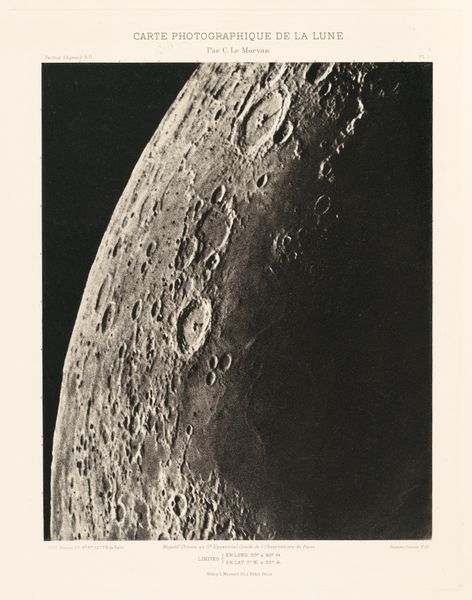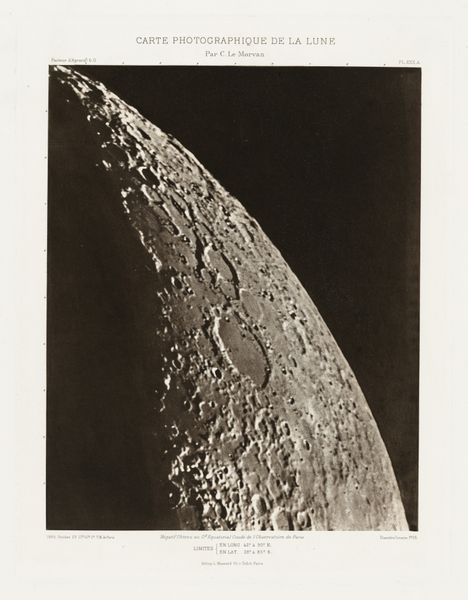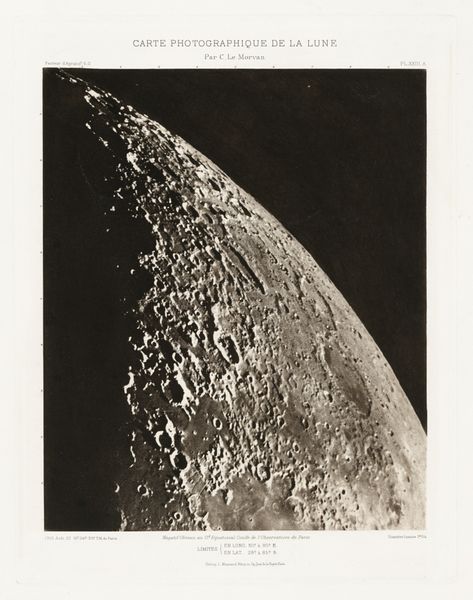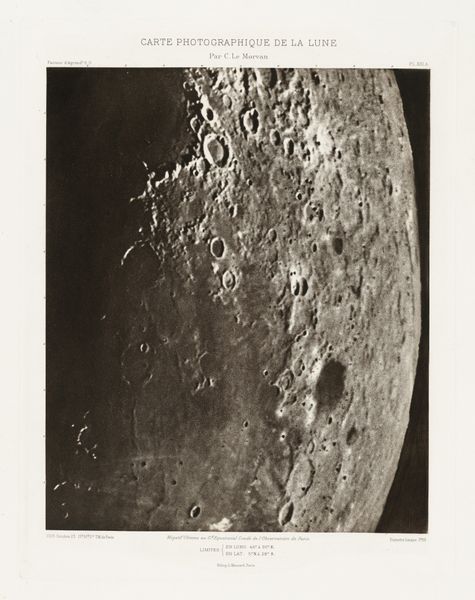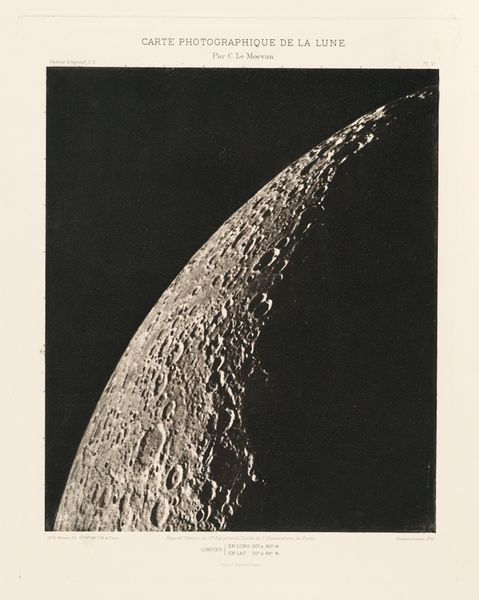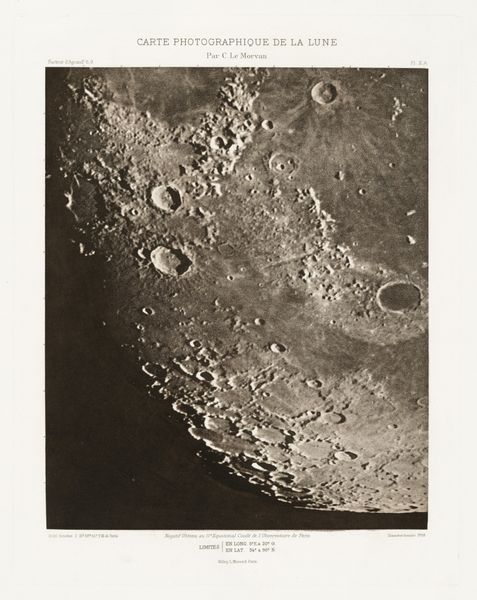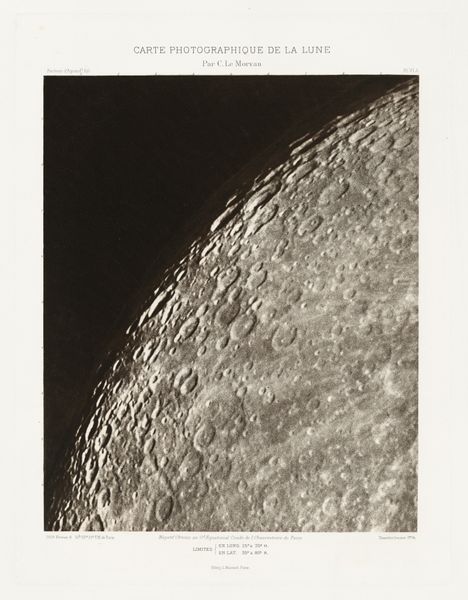
Carte photographique de la lune, planche XVII.A (Photographic Chart of the Moon, plate XVII.A) Possibly 1902 - 1914
0:00
0:00
print, photography
#
negative space
# print
#
photography
#
geometric
#
modernism
Dimensions: image: 31.1 × 25.5 cm (12 1/4 × 10 1/16 in.) plate: 38.9 × 29.5 cm (15 5/16 × 11 5/8 in.) sheet: 49 × 37.9 cm (19 5/16 × 14 15/16 in.)
Copyright: National Gallery of Art: CC0 1.0
Curator: This is "Carte photographique de la lune, planche XVII.A," or "Photographic Chart of the Moon, plate XVII.A," by Charles Le Morvan. It is a print from sometime between 1902 and 1914, captured using photography. Editor: The contrast is really striking, almost theatrical. That deep, inky black against the stark, cratered surface... it feels vast and unknowable. Curator: It certainly taps into our fascination with the cosmos. But consider this image as part of a larger effort – the creation of a detailed lunar atlas. Photography allowed for unprecedented accuracy in mapping the moon's features, moving beyond purely observational drawings. Editor: So, science and art intertwining. And yet, doesn’t that scientific purpose itself shape the image's impact? To present the moon so clinically almost seems to deny its historical associations. Its role as an emblem of feminine power, for example, is seemingly erased by its photographic "objectivity". Curator: An erasure, perhaps, but also a shift. Le Morvan gives us access to something previously unseen, a direct impression of the moon’s geography. Those geometric patterns formed by light and shadow evoke something otherworldly, far beyond those established terrestrial understandings of gender. We gain an alternative way to map out its cultural terrain. Editor: I suppose I'm just always aware of what these supposedly objective images leave out. Whose gaze is privileged here? The perspective is undeniably male and Western, even if unintentionally. Who benefits from that vision? The scientific institutions, likely. Curator: I see it more as an expansion of vision, both literally and figuratively. Photography allowed for new possibilities to imagine the universe, changing humanity's cultural awareness by opening it up to entirely new frontiers. Editor: I can’t deny it is striking; I am only suspicious about who it enables to reach those new frontiers and what they hope to gain in the process. Curator: And that healthy dose of suspicion might be what’s most important as we look deeper into this picture together. Editor: Agreed, considering and challenging allows images such as these to reveal their own layered history.
Comments
No comments
Be the first to comment and join the conversation on the ultimate creative platform.

